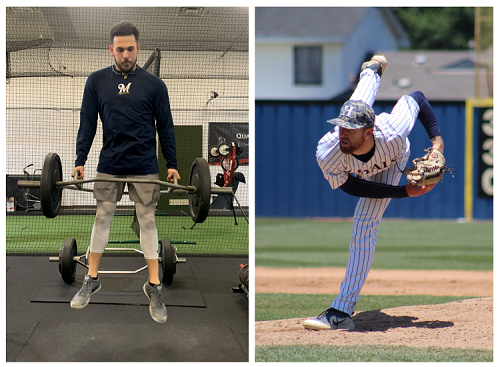
Note: Please note that at the end of this article there are two webpage links with access to exercise videos referred to throughout this article for novice and intermediate / advanced athletes.
Why it is important?
According to Escamilla JSCR ’12 Young athletes participating in a strength program increased velocity in a much safer manner than those who participated in a throwing program only.
Here is why!
As a young athlete grows, their center of mass / gravity moves further up from the ground, week-to-week and month-to-month. The longer limbs / lever arms they are learning to deal with helps explain the “awkwardness” we see in athletes (and youth in general) during puberty. Getting stronger goes a long way to help create and maintain a more stable base of support while making the athlete more efficient in low positions, as well as helping to create faster COD (change-of- direction) speed.
While an entire book could be written (and has) on the subject, today we will look at what I believe to be several “big bang for the buck” exercises that can and should be included in any high school athlete’s off-season strength program. In addition, I have only included exercises that utilize equipment that can be found in most high school weight rooms to get young athletes ready to play ball in the spring.
But first, let us address a couple “myths” on the topic of strength training as it relates to adolescents.
Myth #1 – Strength training is unsafe for children – We have seen countless injuries due to throwing (internal rotation of the humerus is the fastest and most ballistic motion in sports) and trauma due to collisions or falls, but in over 15 years of training young athletes, I can count the times on one hand that an injury has occurred on my watch in the weight room and never one requiring medical attention or surgery. A parent will have their kid throw 9-10 months a year, yet it is the weight room where they say, “I don’t want my kid to get hurt”. If that is the case, then they should get him in the weight room…yesterday!!
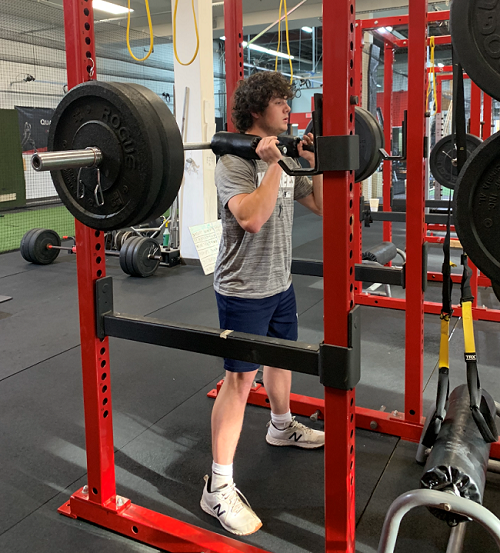
Myth #2 – Strength training will stunt a young athlete’s growth – The myth that kids will stop growing if they lift weights too young is not supported by any scientific evidence or research. And years of scanning the internet for articles on the topic, I have found none. What is supported by scientific evidence and research is that properly designed and supervised resistance training programs have numerous benefits, including:
-
-
- Increasing strength and bone strength index
- Decreasing fracture risk and rates of sports-related injury
- Growing self-esteem and interest in fitness
-
All that being said, let us get into some of the “nuts and bolts” of a great high school strength and conditioning off-season program. In this article, we will cover:
-
- Type of Athlete / Pre-requisites
- Setting Up a Daily Routine
- Programming
- Novice (younger)
- Intermediate / Advanced (older or physical mature)
1. Type of Athlete / Pre-requisites
Many coaches will plaster the same training program onto an entire team even though it is comprised of athletes with very different movement qualities and training experience. Using overly complex methods with people who have not earned them yet is NOT a good look.
As a result, I will break this down into two categories:
-
- Novice
- Intermediate / More Advanced
Let us first break down understanding these terms and how to look at the “type” of athlete we have in front of us to help build the best blueprint for success.
Novice
-
- Ages 16 and under or 17-18, if physically immature
- Training Age – Under 1 continuous year of weight room experience (this does not mean training 4 months last off-season and again 4 months this off-season)
- Mental Maturity – This requires getting to know each of your athletes to find out how well they can self-motivate and follow training instruction.
Intermediate / More Advanced
-
- Ages 17-18 or 16, if physically mature
- Training Age – Over 1 year weight continuous weight room experience
- Mental Maturity – This requires getting to know each of your athletes to find out how well they can self-motivate and follow training instruction
2. Setting Up a Daily Routine
During the high school off-season, anywhere between October through March, an athlete has approximately 3-5 months to be ready for their season. Therefore, using a concurrent / conjugate style of programming (programming that doesn’t strictly adhere to one specific quality) with high school athletes is my suggested route. Let’s take a quick look at both types of these training modalities.
Concurrent Model (novice athlete) – This type of programming is used when all types of performance abilities such as strength, speed, and endurance need to be focused on equally over the same period, with the intention of introducing a multi-faceted development of all motor skills. In other words, concurrent has no one main focus and is ideal for the more novice athlete with a lower training age.
Conjugate Model (intermediate athlete) – For the more intermediate athlete that possess a more advanced movement base (and usually higher degree of athleticism) in the weight room, we’ll have one main focus depending on the main focus of the training timeline (where we are in the off season) but will also be training other qualities such as strength or power as a “minor” so to speak.
“Depending on the time of the off-season, strength and power can be trained together”
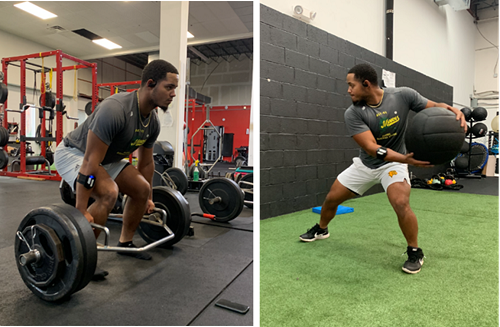
Advanced Athletes – For the more advanced athlete, we can then implement “block periodization, where we are training one quality at a time. But these athletes are “far and few between” in the high school setting and is another article all together.
Bottom line, if you feel like you have an advanced athlete, you are probably dealing with an intermediate at the high school level.
3. Programming
The Warm-up – Although this article’s focus is on strength training, it must be said that a proper warm-up is a must, regardless of level, and should include at least 15 min of mobility and movement work to activate, as well as raise baseline body temperature in preparation for any training session.
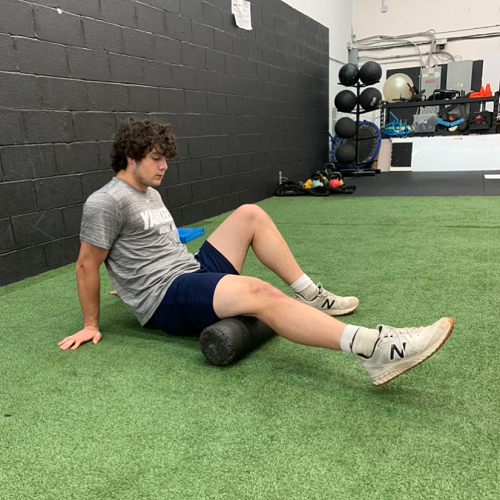
Programming for the “Novice” Athlete – For the novice high school athletes to be able to move on to “more advanced” multi-joint movements and speed and agility work, training should first focus on more basic movements in the first phase of training. These movements include:
-
- Hip hinge
- Squat
- Push
- Pull
- Carry
- Perform single-leg movements / Plyometrics
- Perform Scapular control / stability exercises with good form
Suggested Exercises and Loading Intensities
As far as the main lifts go, lower sub-maximal loads are used to keep the focus be on good form. Training Note – Athletes may train the same 3-4 basic lifts for 8-12 weeks before moving on to different exercises, although existing exercises may be progressed throughout the 8-12 week period.
-
- Intensity – 70-80% 1RM
- Sets – 3-4
- Reps – 8-10
Below is a sample of some great exercises where form can be taught quickly and be done in any moderately equipped high school weight room.
Hinge – Learning to hinge is crucial in all sports to help master the bottom position of movement. Goblet squats work great and can be done to a box until the athlete feels and looks good in the bottom position. For athletes with absolutely NO weight room experience it may be a good idea to strengthen the posterior chain for a few weeks with hip bridges prior to working on the hinge position.
“Learning to hinge is crucial in order to help master the bottom position of movement.”
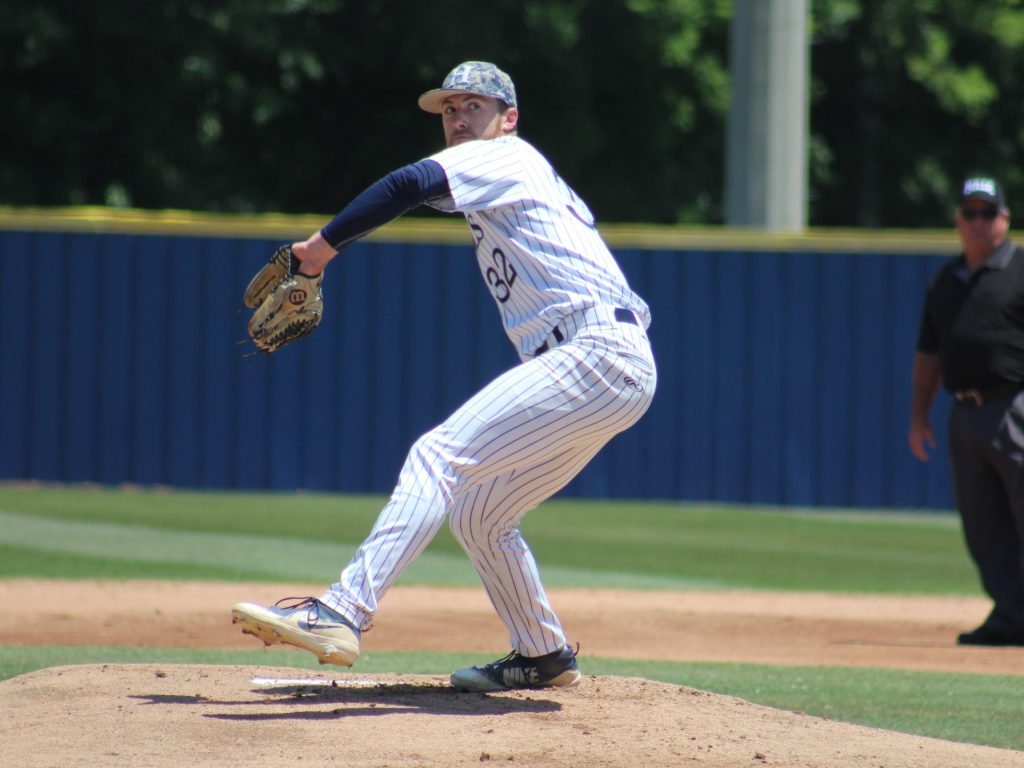
Push – For ball players, scapular upward rotation is a big player in getting the arm overhead efficiently. Pushing exercises such as pushups help train upward rotation by allowing the scapula to freely rotate on the rib cage. However, many novice athletes simply do not possess adequate strength to do them correctly, causing more harm than good (excessive low back extension and anterior glide of the humerus) especially in the bottom position. For these athletes, dumbbell bench press may be a better idea.
“Pushing exercises such as pushups help train upward rotation and get the arm overhead more efficiently by allowing the scapula to freely rotate on the rib cage.”
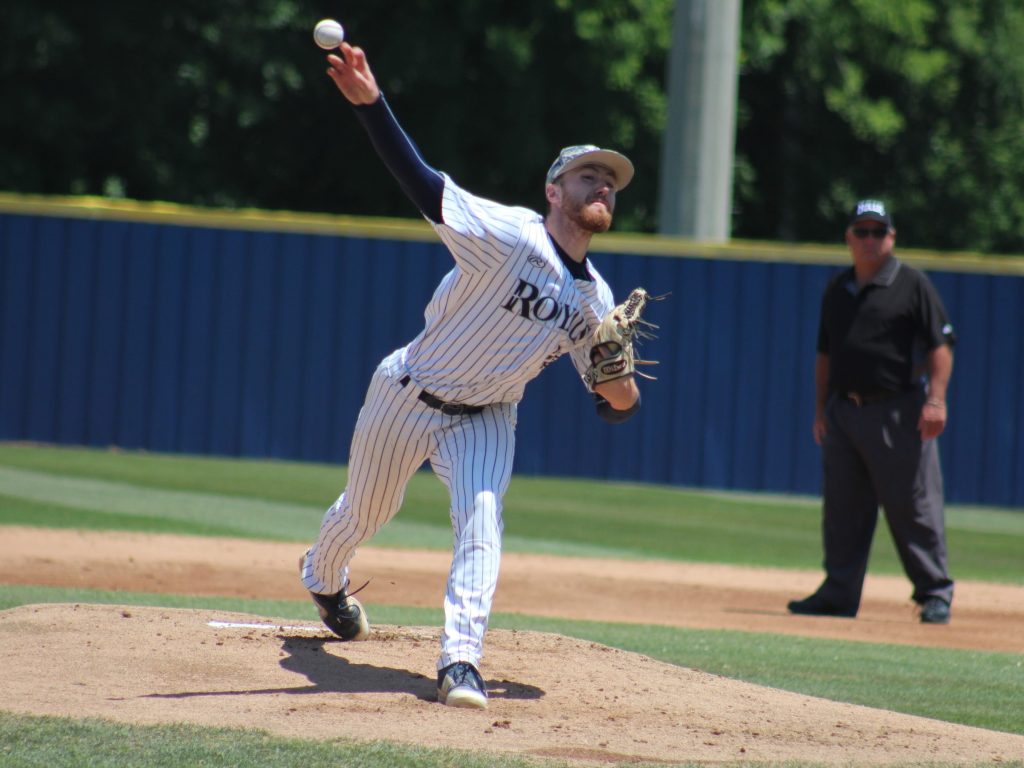
Pull – Using row variations that adds a rotational component helps focus not only retraction of the scapula, but on protraction and/or upward rotation as well. It is also great for coaching efficient loading of the front hip through release and hip extension of the back leg.
“Using row variations that adds a rotational component helps focus not only retraction of the scapula but efficient loading of the front hip as well”
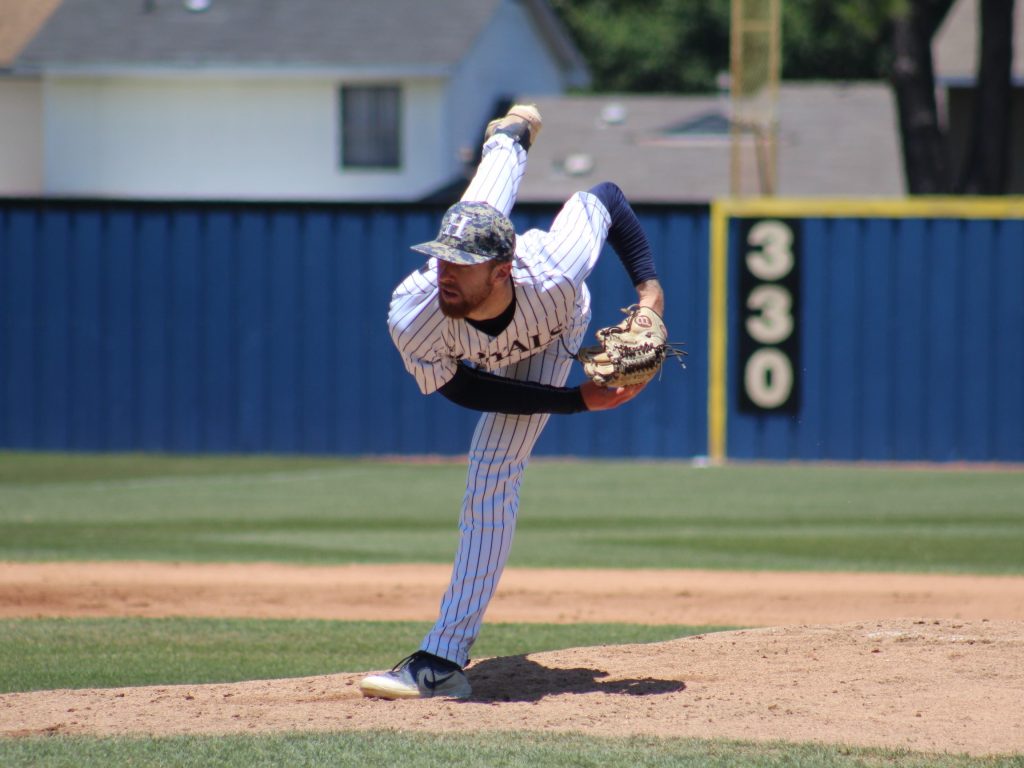
Leg Movements / Plyometrics – Learn techniques on basics such as landing mechanics in the sagittal plane first before working on lateral and change-of-direction mechanics / speed. With the novice athlete, phase 1 plyometrics focus more on deceleration / landing. For the upper half, med balls are a “staple” and work great in both novice and advanced programs.
Arm Care / Cuff Work – Focus on mastering the fundamentals of good form during arm care to reinforce using the cuff and not the bigger prime movers such as the lat or lower back. There are numerous articles on arm care variations on our website.
“Mastering the fundamentals of good form during arm care to reinforce using the cuff and not the bigger prime movers”
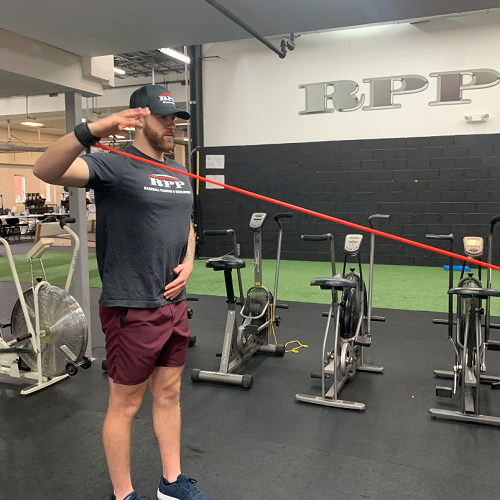
Programming for the Intermediate / Advanced – Once an athlete becomes more experienced in the weight room, the programming will move to more of a conjugate model. Exercises will also be directed more geared towards transfer to sport- in this case baseball.
Suggested Exercises and Loading Intensities
-
- Intensity – 80-90% 1RN (for strength), 40-80% 1RM (for power)
- Sets – 3-5 (strength), 4-6 (power)
- Reps – 3-5 (strength), 3-4 (power)
For Strength – Intermediate / Advanced (early off-season)
Hinge – As young adults spend more and more time in front of computers, it’s more important than ever to create more “good” stiffness to help create good posture. A big part of that is building a strong posterior chain. In doing so, we are building mass amounts of muscle at the same time. Enter the king of all exercises… the deadlift.
Knee Dominant – Unilateral exercises such as split squats allow us to borrow from all three planes of motion more than a conventional bilateral (two legged) squat not to mention being about as “sports-specific as you can get.
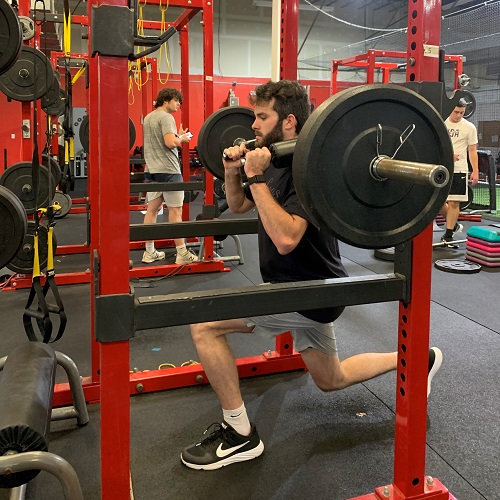
Pull – The seal row helps in the activation of the mid/lower trapezius and Rhomboids. Due to the fact that it is done prone (lying on your stomach) and with the chest supported, it removes the possibility, of being able to use too heavy of a load as well as the overuse momentum, so everything you pull is done using your back, shoulders, and arms. This means more development in those muscle groups, with less of a chance for injury less injury.
Leg Movements / Plyometrics – Once an athlete has a good handle on landing mechanics, we can then progress to exercises that utilize faster/shorter ground contact times as well as working on lateral and change-of-direction mechanics/speed. Enter phase 3-4 plyometrics with the Reactive Heiden.
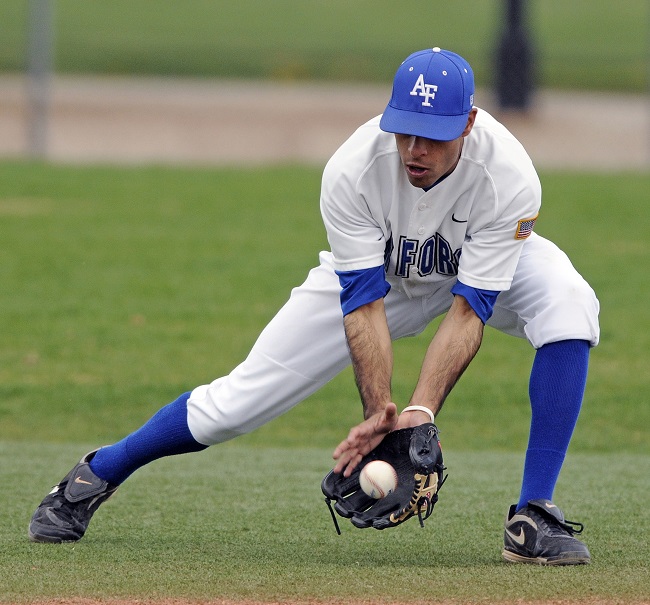
Arm Care / Cuff Work – Focus on mastering the fundamentals of good form during arm care to reinforce using the cuff and not the bigger prime movers such as the lat or lower back.
For Power – Intermediate / Advanced (later off-season)
Trap Bar Jumps – Later in the off-season when transferring more to rapid, more powerful movements, loaded jumps are a staple for us. They are key for improving force production and rate of force development (RFD) and have been shown to produce equal improvements in lower body RFD compared to Olympic Lifting variations with less learning time as well as risk of injury.
“Incorporate more powerful movements such as loaded jumps later in the off-season”
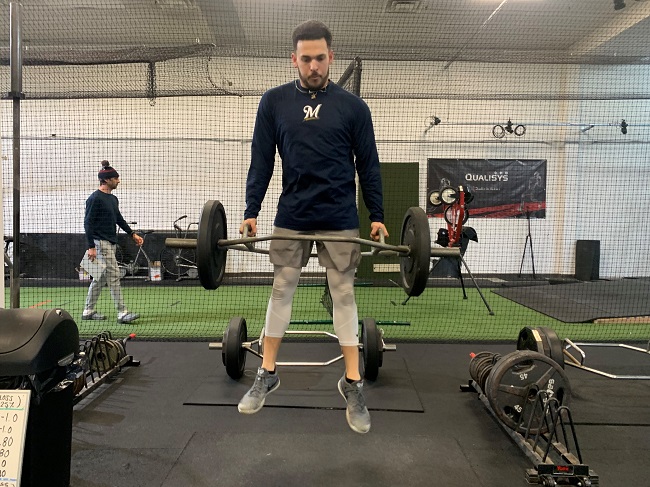
TRX Row – These are a great, easy way to work on horizontal pulling while training core strength and stability at the same time. Another great thing is the fact that they can be put up on any power rack or even doorway and the price point is very affordable- especially considering the many training effects that can be achieved with them. Today we will look at the basic TRX row.
Landmine Press – The landmine press is great for training the core to help create a more stable platform as well as upward rotation when trying to get overhead. The half-kneeling position allows us to take the
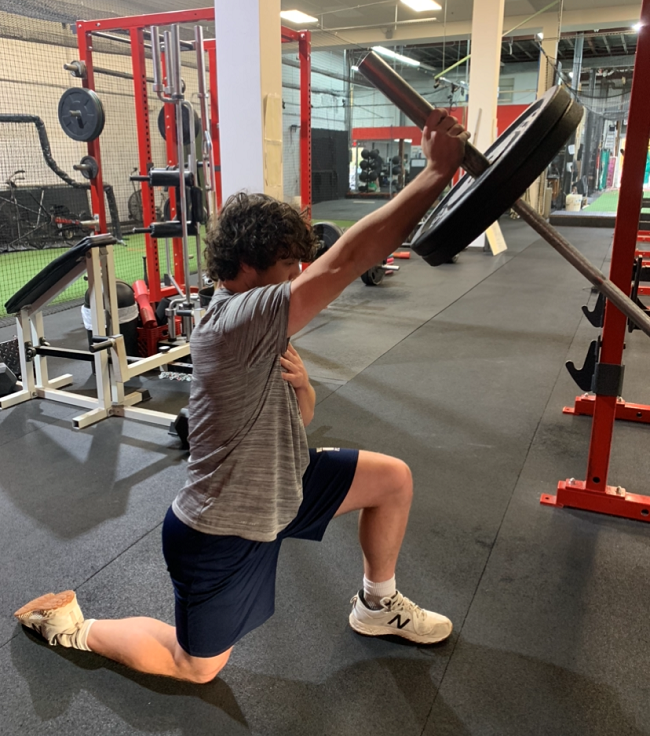
Med Ball Work – As mentioned earlier, med ball work is a “staple” for rotational athletes and can handle high volume of sets. Reps should be kept to under five however to help maintain explosiveness. Lower body plyometrics can be added in to give us more “bang for the buck” as in the step back shovel pass.
Periodization – Intermediate / Advanced
In a perfect world, finding out where each of your athletes fit on the force-velocity curve would be ideal. Is this athlete incredibly strong, but not fast? Training with lighter loads (40-80% 1RM) and emphasizing more elasticity/reactive qualities such as med balls and plyometrics would be ideal. However, if the athlete is fast but not strong (> 2x bw deadlift), more time should be spent into developing max strength (80-90% 1RM)
Unfortunately, in most high school settings, assessing these qualities are not only unrealistic but occupy more time than a coach may have.
So, using the strength-speed continuum (image below), the phases will reflect the competitive season. In early offseason, weights might be heavier, and the speed of movement will generally be slower. The focus will be closer to the absolute strength end of the continuum. Late in the off-season, weights may decrease as speed of movement increases, and the focus becomes transferring strength gains to the speed of sport.
Strength-Speed Continuum

Early Off-Season
-
- October – December
- Bigger movements/ higher resistance and slower tempos (strength)
Later Off-Season
-
- January – March
- Decreased resistance, faster tempos (power)
- Once throwing starts – A baseball pitcher’s throwing program begins to become primary to his training program as we get later into the off-season. Exercise selection, while more variable and through a much wider selection than the beginner athletes, will all have a specific purpose that relates back to performing at their sport. The intensity/volume will be scaled directly with the offseason of the sport.
In-Season
-
- March – September
Sport specific movements, medium resistance to maintain strength and power (for more info please visit our website’s article section and look up in-season training)
Equipment
Finally, here is a list of some basic equipment need that can be found (or should be) in most high school weight rooms:
-
- Power Rack
- 45 lb. Standard Barbell
- Dumbbells (15-75 lbs.)
- Hex Bar (Trap Bar)
- Olympic Plates
- Cable Machine
- Standard Weight Bench
- 12-36” Plyo Boxes
- 6-8 and 10 lb. Medicine Balls
Have fun and train safe. Remember, athletes get really good at what they practice. That includes moving incorrectly. See ya’ in the gym…
Samples Videos
Here are two links to several exercise videos referred to in this article.
-
- Novice – https://tinyurl.com/43d4brf4
- Intermediate / Advanced – https://tinyurl.com/86zbsrv8
By Nunzio Signore (Owner at RPP Baseball)
You live too far to train with us in-house at RPP? You can now train with us on a REMOTE basis.


